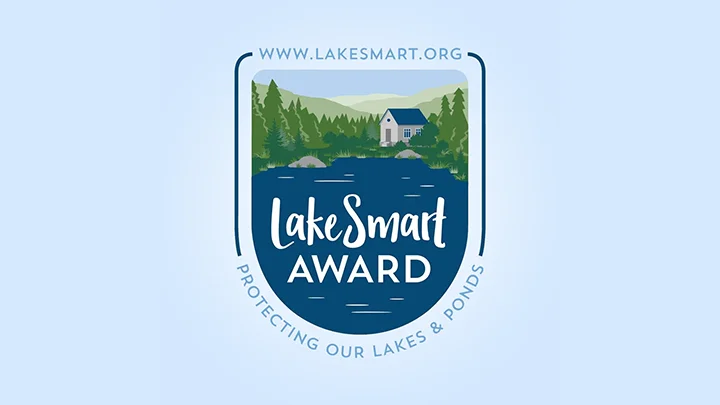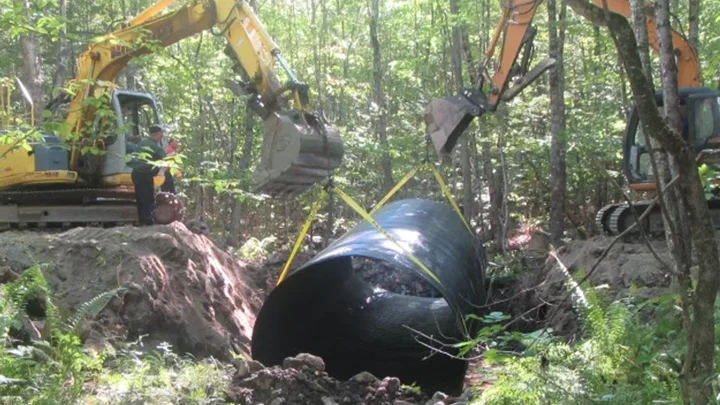Good Stewardship Starts on the Land
Healthy lakes exist in equilibrium with the natural cycle of nutrients, but when excess nutrients (phosphorus and nitrogen) are introduced by human development (through erosion, fertilizers, and run-off), lakes are pushed past the tipping point and algae can bloom out of control. Here at 7 Lakes, we work to limit the introduction of anthropogenic nutrients through erosion control programs and community education.
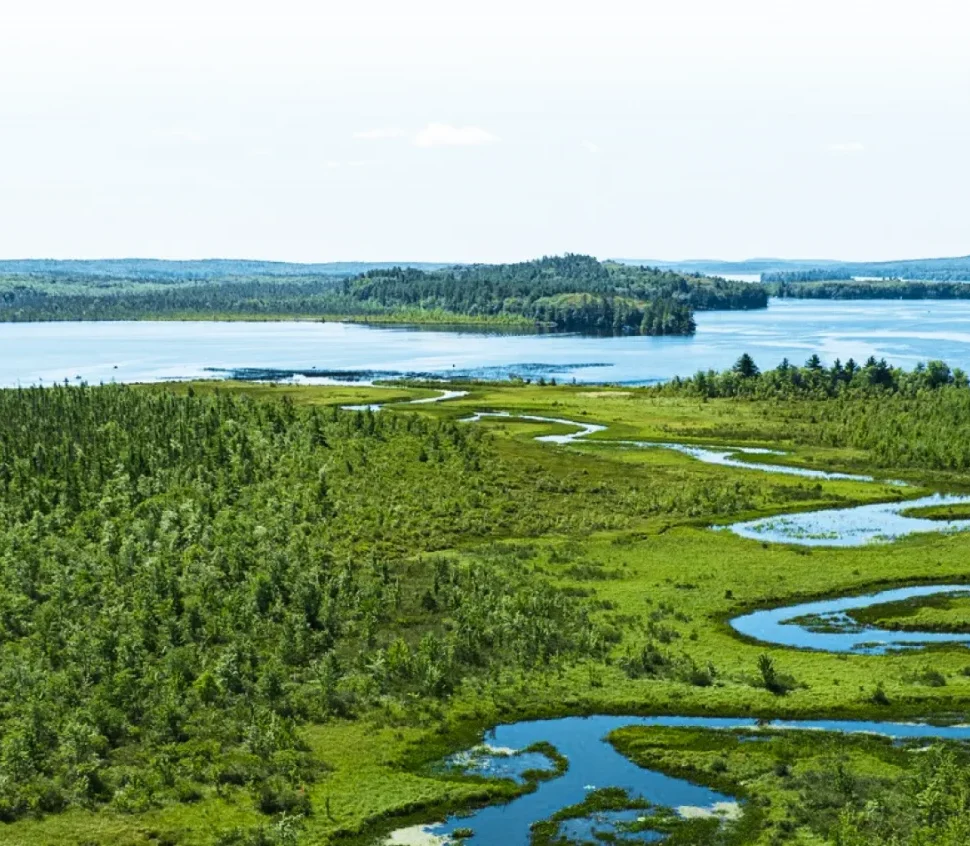
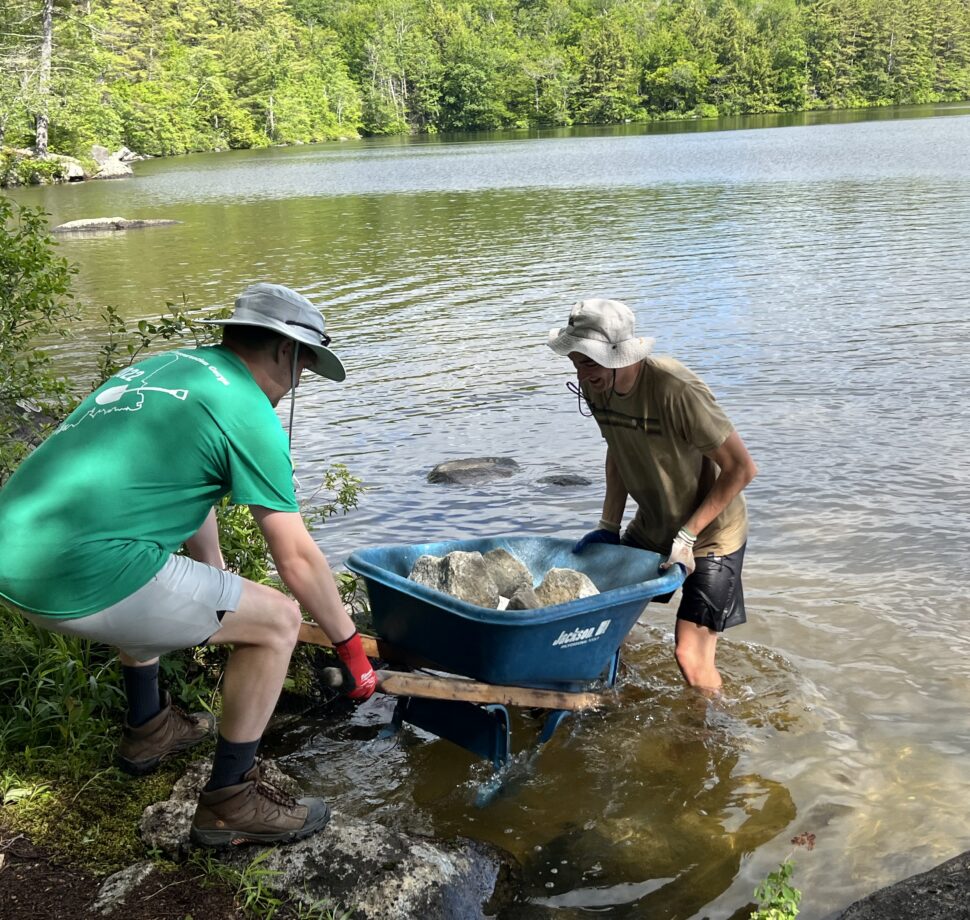
Youth Conservation Corps Programs
7 Lakes Alliance is also home to Maine’s largest Youth Conservation Corps (YCC) that employs high school and college students to reduce sources of pollution in our lakes through the installation of lake shore erosion control projects.
Learn More319 Cost-Share Program: Clean Water Act Grants
Since 1999, 7 Lakes Alliance has received funding provided by the U.S. Environmental Protection Agency under Section 319 of the Clean Water Act. The funding is administered by the Maine Department of Environmental Protection (DEP) in partnership with EPA. Working collaboratively with Maine DEP and local towns, this program has already brought more than $1.3 million of federal grants to the Belgrade Lakes Region to protect and improve water quality through erosion control projects throughout the watershed.
Camp Road Maintenance Plans
7 Lakes provides Technical Assistance for camp road owners and road associations. If you would like to learn more, please contact us.
Contact Us
Watershed Management
Our lakes and streams are the lifeblood of our region. The health of the waters depends largely on what flows into them. Today, our waters are under attack.
Some of our lakes have excess phosphorus, resulting in annual algal blooms that not only diminish quality of life on these lakes but also threaten the ecological and economic health of our region. Prevention is our priority; through watershed surveys and erosion control projects, we decrease the amount of excess phosphorus entering the lakes.
Watershed Plans were developed in collaboration with lake associations, towns, Maine Department of Environmental Protection (DEP), and the US Environmental Protection Agency (EPA). The purpose of a Plan is to implement a strategy to improve lake water quality by addressing identified erosion and water quality problems over a 10-year period. The Plans are also required to apply for Clean Water Act section 319 grants from Maine DEP.
Here are the Management Plans for all seven major lakes in the Belgrade Lakes watershed:
- North Pond – 2024
- East Pond – 2018
- McGrath Pond-Salmon Lake – 2018
- Great Pond – 2021
- Long Pond – 2022
- Messalonskee Lake – 2022
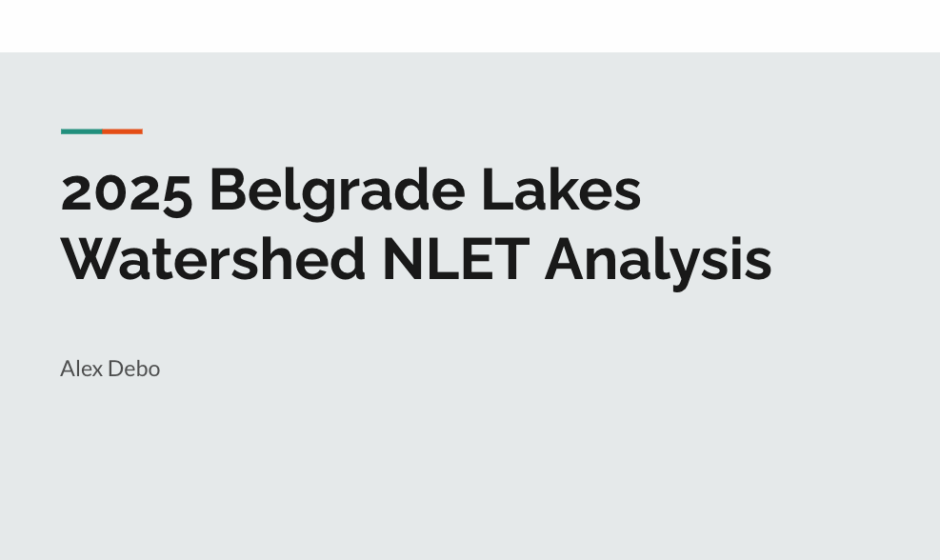
Septic Project Initial Findings
Learn from Alex Debo, an intern from Maine Geospatial institute (MGI) who shares updates on the septic system modeling project including both technical details and preliminary results. He also
Keep Reading
